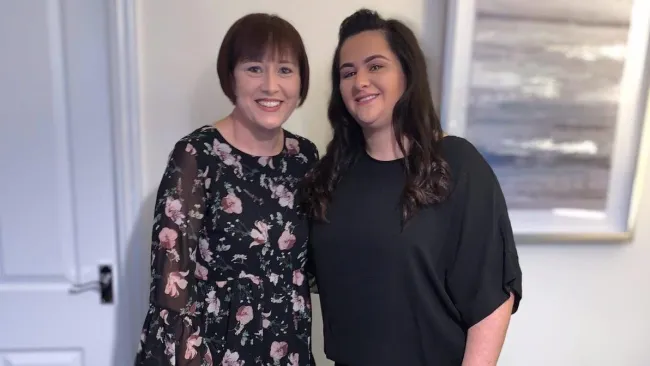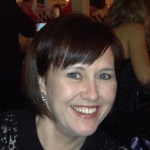
I’ll never forget first walking through the front door of my very own home.
Looking around the space, I loved all the details I’d handpicked. My living room curtains were perfect. The bedding was soft and the matching pink microwave, kettle and toaster set in the kitchen looked wonderful.
‘This is all mine!’ I thought excitedly.
It was long overdue but finally, after spending 12 years in and out of hospitals and an Assessment and Treatment Unit (ATU), I had my own place.
As a young teenager, I was diagnosed with a mild learning disability and atypical autism. I attended special needs schools and lived at home with my mum but, even though I had lots of support, I began struggling with my mental health.
I used to get very upset about things, heartbroken, really. And in my distress, I often ended up attacking things and people around me.
Eventually, in my late teens, I was diagnosed with personality disorders. Sometimes I couldn’t control my behaviour and, at times, it got so bad that the police were called.
The first time that happened I was really scared. I remember being taken away from my home to the police station and then put in a cell. Though the door was left open, I was worried about what would happen to me.

On that occasion I was sent home, but this was the first of many times when I was taken away from my family home.
It soon became obvious I needed specialist support. So, when I was about 25 years old I was moved into a long-stay hospital where I was detained under the Mental Health Act.
This came as a total shock to me and my mum. She wasn’t told anything until it had all been decided but she was unable to stop what was happening.
At the hospital, I started off in a ward that was just for me. I was on a mix of sedative medications, had 24-hour support from a nursing team and saw the consultant psychiatrist at least three times a week.
As I progressed, I was moved into a bungalow within the hospital, though it never felt like home.
I was still staying within a specialist hospital, so there were a lot of restrictions. For example, the TV was in a secure cabinet and all knives and forks were counted and locked away.

I was also limited to what I could watch, what I could do on the computer and how I could use social media. As for exercise, I could only walk in the grounds around my bungalow.
Plus, as the hospital was a long way from my family home, it was difficult for my mum to visit. While we FaceTimed regularly, I saw her once per month at most.
I didn’t like that because, aside from the 5-to-1 staffing I had for restraint, I had few people to spend time with. It was, at times, incredibly lonely.
After three years though, it was finally agreed at my psychiatry meeting that I had made good progress. Planning could finally begin for me to move out of the hospital.
These things take time though and it was often frustrating. ‘I don’t need to be here anymore,’ I’d say to them, explaining that I wanted to live in Leeds near my mum.
But in 2017 they finally told me that they were going to put me on a Section 17a, meaning I could live in the community if I agreed to the place I would live, the support provider I would work with and to take my prescribed medication.

That’s when everything started to change.
Soon after, I met people from Aspire – a Community Benefit Society that supports people with learning disabilities to have better lives. With their help, I was going to get my independence back.
Aspire developed a plan to help manage my behaviours and to eventually reduce the number of staff who support me at any time. I was allowed to help pick my own team of staff and set out how and when I wanted support to be delivered.
There was so much to do which made the process slow. It took 18 months for me to get my own space, but it was worth it in the end.
I helped choose my new home – it had to be completely renovated and adapted for me and I visited while the work was being undertaken – and Aspire also encouraged me to pick everything that went inside.
I had full control over the furniture, decor, curtains, blinds, bedding; everything from the size of my TV to my pink kitchen set. Now, it’s just how I like it.

While I still have staff who support me, it’s down to only 2-to-1 now, and I generally have complete choice and control over my life.
I started attending a day service where I can play games, socialise and go into the community. I became part of a drama group and made lots of friends – including Danny, my now fiancé.
I also play rugby with the Leeds Rhinos Foundation and go to college. Life is so much better now that I have got some of my independence back. I enjoy every day.
This year I was even announced as a winner at the 2024 Dimensions Leaders’ List Awards in recognition of my journey moving from institutions to independence.
And one of the things I love most is that, every June, I host a family party to celebrate the anniversary of moving into my house – this year was the fifth.
My experience of living in a specialised hospital was not a good one and, if I can avoid it, I will never go back. But so many people don’t have that choice.
There are roughly 2,000 people in ATUs right now. Many of whom will have been there for years and years. Yet most, like me, could live a better life in their own home with support.
More from Metro
-

Run clubs have become our new nightclubs – here’s why
Surely everyone deserves that chance?
Do you have a story you’d like to share? Get in touch by emailing jess.austin@metro.co.uk.
Share your views in the comments below.
Sign up to our guide to what’s on in London, trusted reviews, brilliant offers and competitions. London’s best bits in your inbox
Disclaimer: The copyright of this article belongs to the original author. Reposting this article is solely for the purpose of information dissemination and does not constitute any investment advice. If there is any infringement, please contact us immediately. We will make corrections or deletions as necessary. Thank you.





